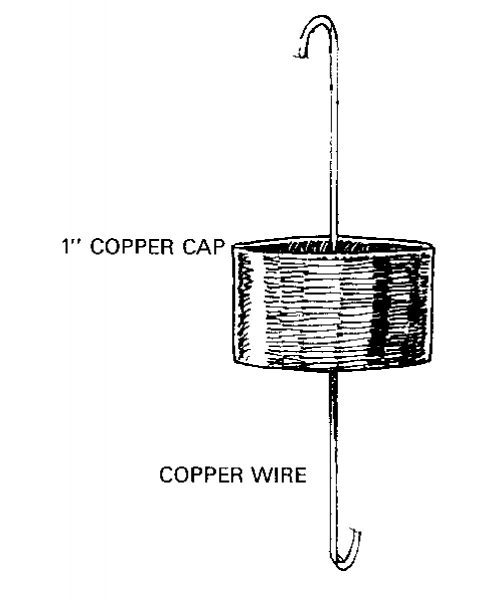Forestry & Wildlife

Hummingbirds are fun to watch and easy to attract by using feeders or by planting flowers in your yard. Feeders are inexpensive and easy to maintain. Hummingbird watching can be exciting and fun-filled activity for the whole family.
Hummingbird Biology
The rubythroated hummingbird is common to all parts of Alabama. The male can be recognized by his deep red throat patch and dark green back. The female looks like the male except she has no red on her throat and has a lighter green back.
Occasionally, the rufous hummingbird is seen in Alabama, but it is not as common as the rubythroated. The male rufous has a “rufous” or brown color on its back, sides, tail, and head. Like the rubythroated hummingbird, the male rufous hummingbird has a reddish-colored throat patch, but it is more orange than ruby.
During their daily activity, hummingbirds burn a tremendous amount of calories and usually feed about four times an hour. They have tubular tongues that they extend deep inside flowers to reach nectar. Insects also make up a small portion of their diet.
Since a hummingbird cannot feed all night, it has to slow its body functions during the night. This state of suspended animation is called torpor. The hummingbird’s body temperature and heart rate (nor-mally about 200 beats per minute) drop and breathing slows to about 5 percent of what would be expected for a sleeping bird of hummingbird size. Hummingbirds can come out of torpor very quickly.
Feeding Hummingbirds

A copper reservoir used to deter ants.
Hummingbirds are easily attracted to feeders in the spring, usually beginning in April or early May. Many types of feeders are commercially available, and most work well. A feeder that has a bee guard works best because it keeps bees from using the feeder. If too many bees are attracted to the feeder, hummingbirds will not use it.
Feeders are filled with nectar solution that is either purchased or made at home. For the homemade solution, mix 1 part table sugar to 4 to 5 parts warm water. The warm water makes the sugar dissolve faster. Allow the solution to cool before filling the feeder. There is no evidence that hummingbirds need any nutrients other than pure, white table sugar.
Be sure to keep your feeders clean. Rinse the feeders with vinegar and hot water at least once a week, even if some solution is left. Avoid using detergents. Do not allow mold to grow on the feeder or let the feeder solution become cloudy. Discard old feeding solution and store extra fresh solution in the refrigerator.
Never use honey as a substitute for sugar in the solution. Hummingbirds cannot digest honey. They will eat a honey-based solution, but they will soon die from lack of nutrition. Honey may also transmit a fungus that is lethal to hummingbirds.
If ants are attracted to your feeder, coat the mono-filament line (used to hang the feeder) with vegetable oil. The oil keeps ants from climbing down the line. Some feeders have a reservoir on the top, where the line attaches, that can be filled with oil to keep ants from getting to the sugar solution. A reser-voir can be built using a 1-inch copper pipe cap and copper wire
(see illustration).
Many times, when one hummingbird begins to use a feeder, others are attracted as well. Males will set up territories around a feeder and defend it, not allowing other hummingbirds to use it. The aerial combat that follows is very entertaining. If the combat gets too intense, put up another feeder or two on the other side of your yard to limit confrontations.
Planting flowers around your home is also a good way to attract hummingbirds to the yard and garden. Red flowers are most effective. Plantings of salvia, petunia, or trumpet vine, for example, will attract hummingbirds. Many other red flowers grow well in Alabama and will lure hummingbirds to your yard.
Hummingbird Migration
In the fall, leave your feeders up as long as the birds use them. Hummingbirds are migratory and travel south across the Gulf of Mexico and Central America when weather conditions are favorable in the winter. A rubythroated hummingbird can migrate 2,000 miles from breeding site to wintering grounds.
Don’t worry about keeping hummingbirds here longer than they need to stay. They know when it is time to leave for their winter quarters. In the late summer or early fall, just before migration, a lot of hummingbirds may use the feeders and then disappear overnight.

